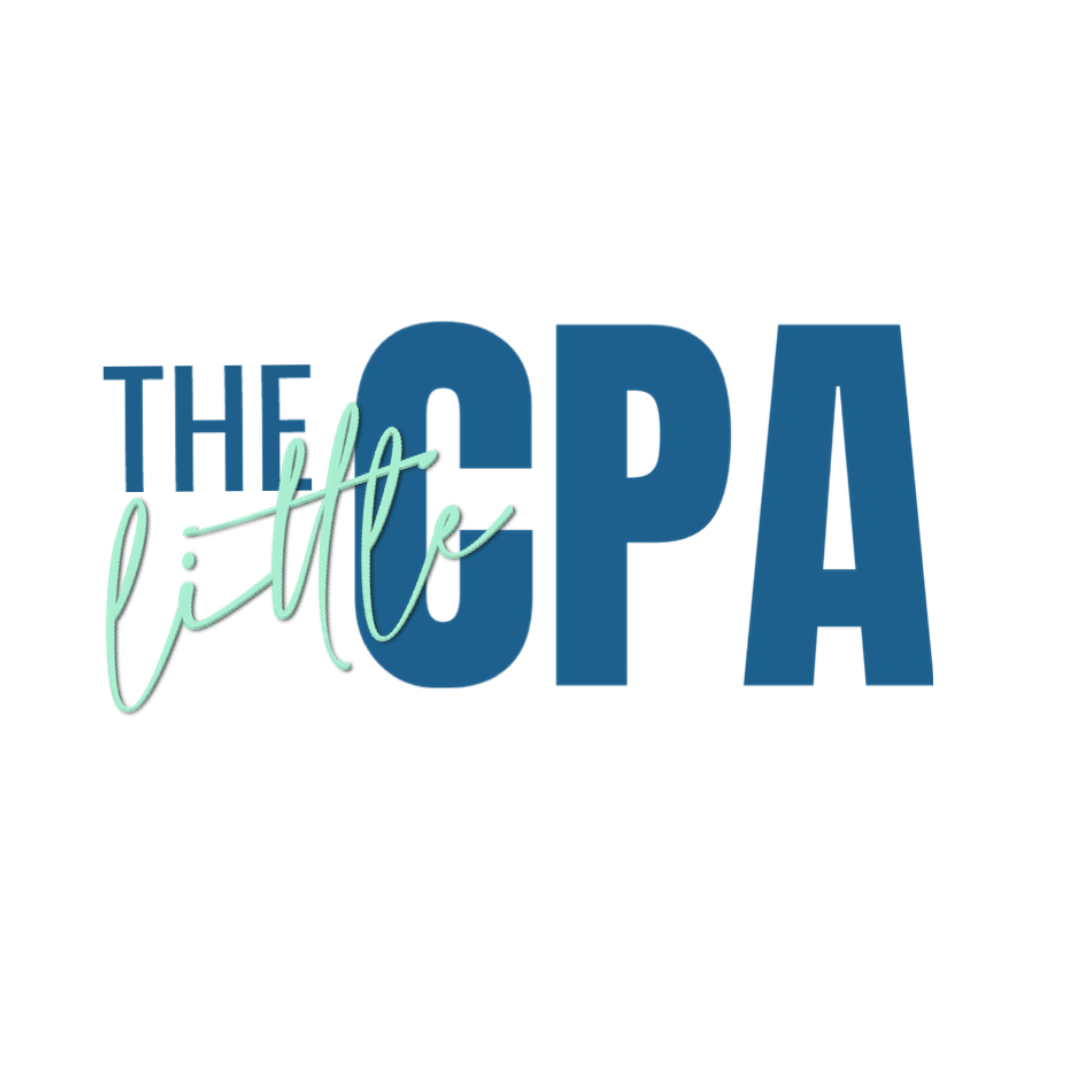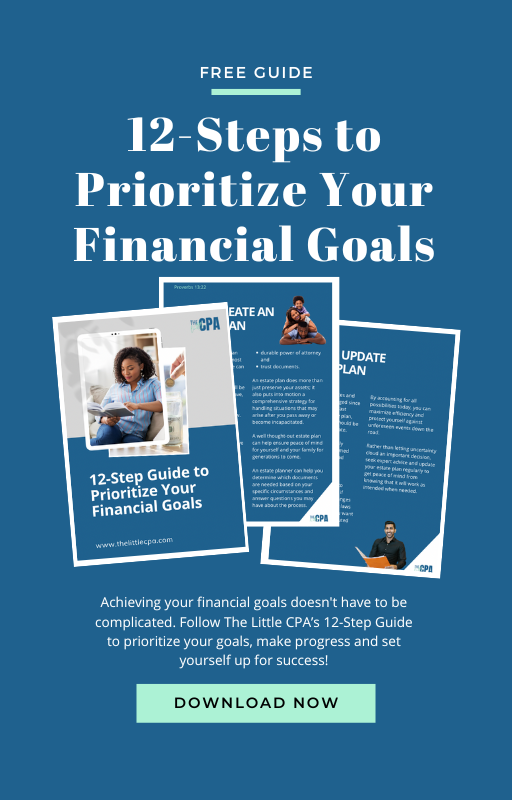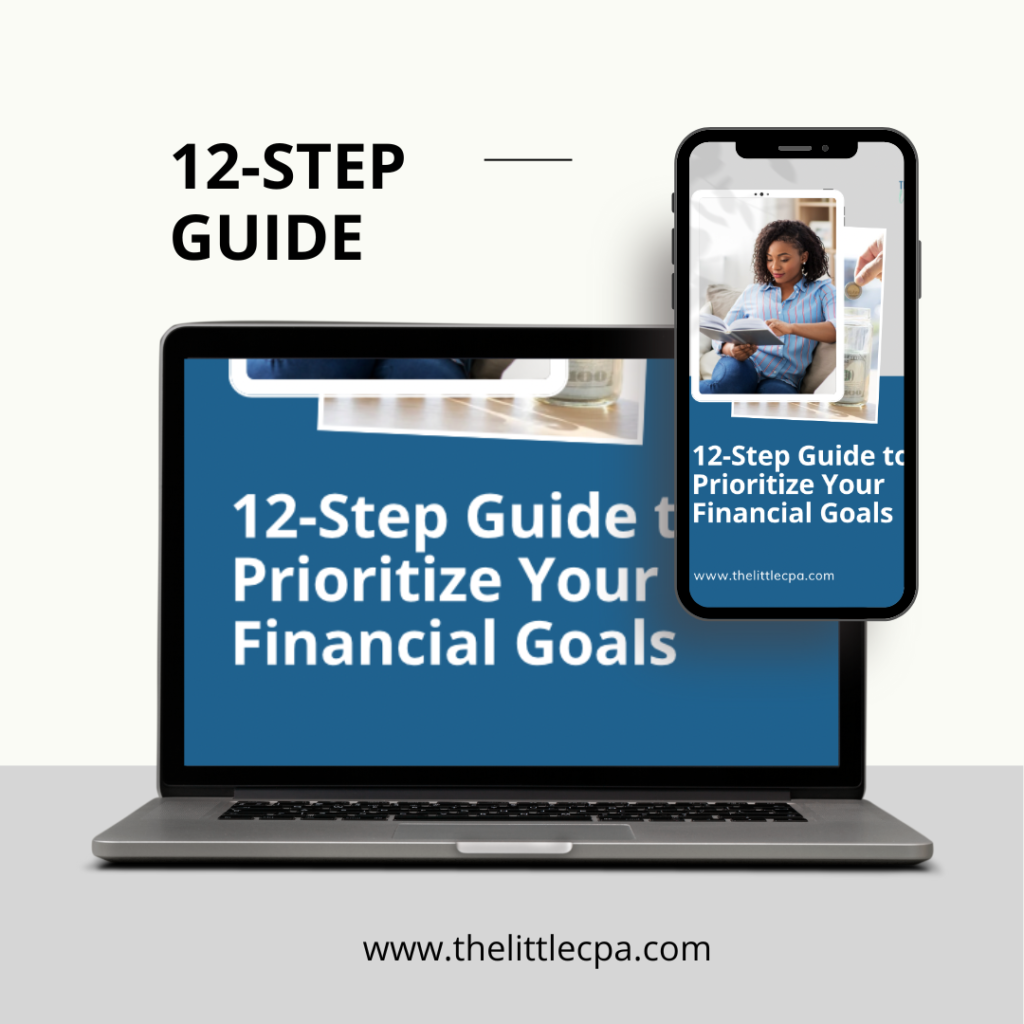 Do you know how to prioritize your financial goals?
Do you know how to prioritize your financial goals?
In which order should you tackle them to reduce risks, make an impact and achieve the biggest payoff?
Many people struggle with these questions, but they actually aren’t as complicated as they seem.
With the 12-Step Guide to Prioritize Your Financial Goals, you have access to an easy-to-use system that will help you create a structure for managing both short and long-term financial goals.
Keep in mind, the best way to develop a comprehensive and personalized plan is to work with a licensed financial planner . Licensed professionals can provide qualified recommendations after they assess your personal circumstances, goals, and values.
However, if you need a Guide to get started, check out the 12 steps below!
{Click here for the 12-Step Guide to Prioritize Your Financial Goals eBook!}
1. Save for Basic Needs
Your top financial priority should be to have enough resources to survive, right?
As such, saving enough to cover basic needs should come before any other financial goal.
For a link to a Basic Needs Calculator, download the 12-Step Guide to Prioritize Your Financial Goals.
2. Fund Retirement and Life Insurance
To get ideal benefits from retirement savings and life insurance, it is important to fund both of these as soon as you are able.
 Retirement
Retirement
Note, this is not the step where you max out your retirement savings (see Step 9). This is just to jumpstart compounding growth.
At this step, you might consider contributing enough to earn your employer match. Or, contributing the minimum required, if any, to open a Roth IRA account.
Life Insurance
Since life insurance premiums are based on risk factors such as age and health, those who buy life insurance at a younger age can benefit from more affordable rates.
Waiting until later in life can make insurance much more expensive and may even limit the types of coverage available.
To learn more, download the 12-Step Guide to Prioritize Your Financial Goals.
3. Pay off High-Interest Debt
Once retirement contributions and life insurance payments have been factored into the budget, it’s time to tackle high-interest debt.
By focusing on paying off high-interest debt – credit cards, consumer loans, etc. – as soon as possible, you can help to save yourself both time and money.
 4. Build An Emergency Fund
4. Build An Emergency Fund
This is the step where your Basic Needs Savings (Step 1) grows into your Emergency Fund.
Emergency Funds help you withstand unexpected financial loss without destroying your finances.
To learn more about emergency funds, download the 12-Step Guide to Prioritize Your Financial Goals.
5. Contribute to sinking funds
Now that your emergency fund is set, your retirement savings are growing, and your high-interest debt is gone, you should now have more purchasing power to accomplish more personalized financial goals.
This is a good step to bring in a licensed financial advisor to help you consider all factors when creating your goals.
To accomplish those goals, you will likely need to establish a few sinking funds.
To learn more about sinking funds, download the 12-Step Guide to Prioritize Your Financial Goals.
6. Give Strategically
No, you don’t have to wait until you finish Steps 1-5 to start giving.
But, this is a good point to stop and assess your financial impact.
Start by identifying a few charitable causes (or people in need) you’re passionate about and setting a budget for them. Try to commit to giving a fixed portion of your income each month; this way, charitable giving becomes part of your everyday life, rather than an occasional thought.
7. Invest and Create a Tax Plan
This is the step where you start to accelerate your wealth. To do this, you need to invest and create a tax plan.
 Invest
Invest
To maximize your returns and preserve your capital, consider investing in a variety of assets that preserve income, preserve capital or provide regular cash flow.
Tax Plan
It is also essential to have an effective tax plan in place to maximize the benefits of purchasing these different assets.
If you have not already, this is a good step to bring in a licensed tax adviser.
A CPA or Enrolled Agent can help you identify what tax savings opportunities are available to you.
8. Create an Estate Plan
Immediately after you acquire wealth-building assets, you will want to create an estate plan.
With the estate plan, you will be able to protect what you have, as well as ensure that your wishes are respected in all matters related to estate law.
9. Maximize Retirement Contributions
Maximizing your contributions means contributing the maximum amount that is allowed by the IRS for a particular type of retirement account.
The amount of your max retirement contribution depends on your age, income level and type of retirement plan (such as 401(k), 403(b), 457 or IRA).
10. Reassess Liquidity Needs and Risks
Liquidity is a measure of how easily an asset, such as cash or stock, can be converted into cash. When you’re getting closer to retirement age, it’s important to reassess your liquidity needs and risks.
11. Pay Off Remaining Debt
Placing debt payoff second-to-last is controversial.
Rightfully so.
For some of you, paying off debt is a social, moral and emotional accomplishment. It’s not just about increasing your wealth, it’s about relieving yourself of all obligations to a lender.
And, that’s totally fine.
If you are in this position, then it’s wise to move this up to Step 3 or 5.
As for this Guide, paying off remaining debt is second to last because you paid off high-interest debt in Step 3, and as a result, your low-interest debt presents less financial risks.
12. Update Estate and Giving Plan
Estate planning is a delicate process, and even the most thoughtfully crafted documents require maintenance to remain valid and up-to-date.
Conclusion
If you tackle these steps out of order… don’t stress about it.
When it comes to financial planning, your financial circumstances and goals are the priority.
So, if maxing out your 401(k) before you buy a house is more important for you, then go for it. As long as you have a viable plan to reach sound financial goals, then you are on your way to financial success.
This Guide is just that… a Guide.
It’s not a law, Scripture or policy.
If you need some structure, then you can follow each step in sequence.
If you want to compare the Guide to your personal plan, then use the Guide as your comparison tool.
And, if you want to use this as a starting point to speak with a Certified Financial Planner (CFP), feel free to reach out to some of the CFPs we’ve featured on The Little CPA blog!
The ultimate goal is to have a plan that works for you. Because, if you fail to plan, you plan to fail.
Need help accomplishing these goals?
Check out the 12-Step Guide to Prioritize Financial Goals for additional tips to help you achieve success.
Happy planning!


